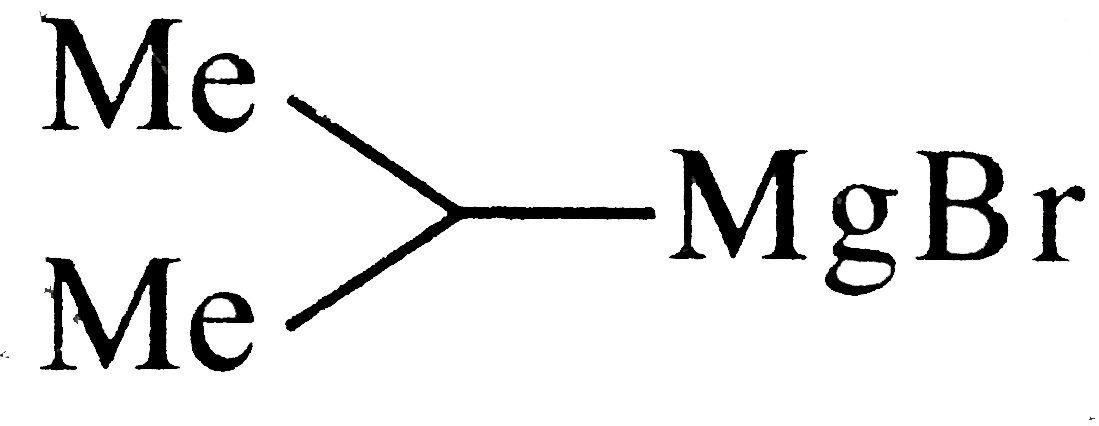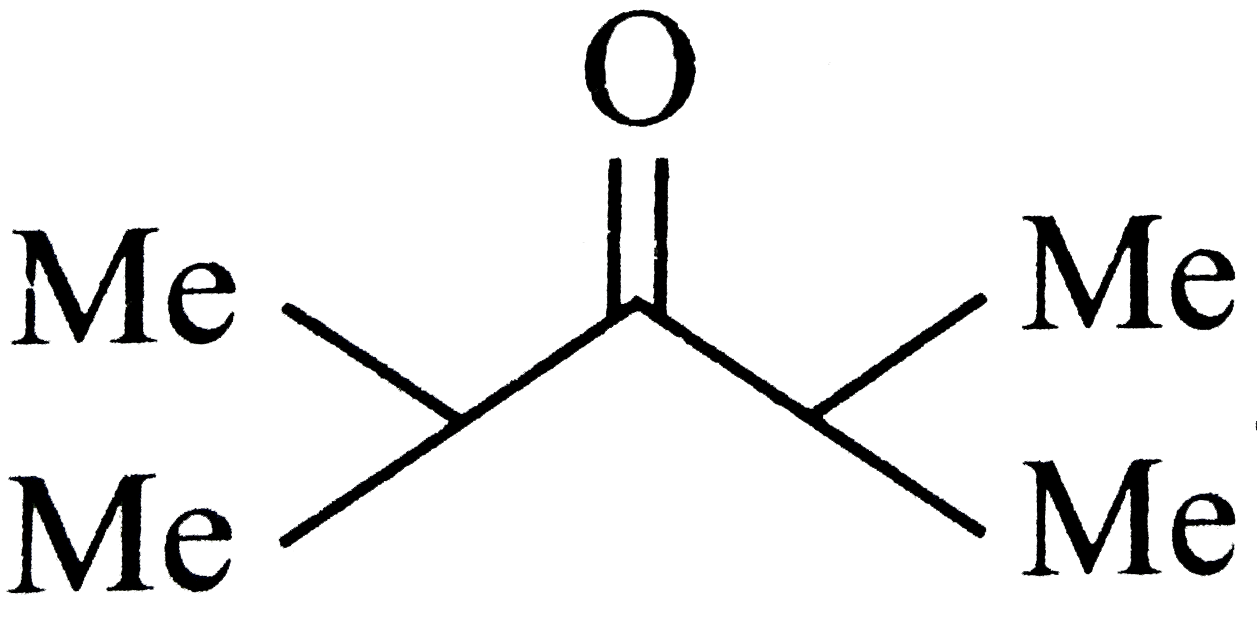If hexanone is reacted with followed by hydrolysis with , the product will be
The correct Answer is:1
To solve the question regarding the reaction of 3-hexanone with sodium borohydride followed by hydrolysis with D2O, we can break it down into a series of steps:
1. Identify the Structure of 3-Hexanone:
- 3-Hexanone is a ketone with the molecular formula C6H12O. Its structure can be represented as:
CH3−CH2−CO−CH2−CH2−CH3
- The carbonyl (C=O) group is located at the third carbon.
2. Reaction with Sodium Borohydride (NaBH4):
- Sodium borohydride is a reducing agent that reduces ketones to alcohols.
- When 3-hexanone reacts with NaBH4, the carbonyl group (C=O) is reduced to a hydroxyl group (–OH).
- The product after this reduction will be:
CH3−CH2−CHOH−CH2−CH2−CH3
- This compound is 3-hexanol.
3. Hydrolysis with D2O:
- Hydrolysis with D2O involves the exchange of the hydrogen atom in the hydroxyl group (–OH) with deuterium (D).
- Therefore, the hydroxyl group in 3-hexanol will be converted to a deuterated hydroxyl group (–OD).
- The final product after hydrolysis will be:
CH3−CH2−CH(OD)−CH2−CH2−CH3
- This can also be written as:
CH3−CH2−CH(OD)−CH2−CH2−CH3
4. Final Product:
- The final product of the reaction is 3-hexanol where the hydroxyl group is replaced with deuterium, resulting in:
CH3−CH2−CH(OD)−CH2−CH2−CH3
Final Answer:
The product will be 3-hexanol with deuterium, represented as:
CH3−CH2−CH(OD)−CH2−CH2−CH3
- 3-Hexanone is a ketone with the molecular formula C6H12O. Its structure can be represented as:
CH3−CH2−CO−CH2−CH2−CH3
- The carbonyl (C=O) group is located at the third carbon.
- Sodium borohydride is a reducing agent that reduces ketones to alcohols.
- When 3-hexanone reacts with NaBH4, the carbonyl group (C=O) is reduced to a hydroxyl group (–OH).
- The product after this reduction will be:
CH3−CH2−CHOH−CH2−CH2−CH3
- This compound is 3-hexanol.
- Hydrolysis with D2O involves the exchange of the hydrogen atom in the hydroxyl group (–OH) with deuterium (D).
- Therefore, the hydroxyl group in 3-hexanol will be converted to a deuterated hydroxyl group (–OD).
- The final product after hydrolysis will be:
CH3−CH2−CH(OD)−CH2−CH2−CH3
- This can also be written as:
CH3−CH2−CH(OD)−CH2−CH2−CH3
- The final product of the reaction is 3-hexanol where the hydroxyl group is replaced with deuterium, resulting in:
CH3−CH2−CH(OD)−CH2−CH2−CH3
The product will be 3-hexanol with deuterium, represented as:
CH3−CH2−CH(OD)−CH2−CH2−CH3
Topper's Solved these Questions
- BOOK - RESONANCE ENGLISHCHAPTER - ALDEHYDES, KETONES, CARBOXYLIC ACIDEXERCISE - INORGANIC CHEMISTRY(d & f- Block Elments)15videos
ALDEHYDES, KETONES, CARBOXYLIC ACID
- BOOK - RESONANCE ENGLISHCHAPTER - ALKYL HALIDE, ALCOHOL, PHENOL, ETHEREXERCISE - ORGANIC CHEMISTRY(Alkyl Halide, Alcohol,Phenol,Ether)56videos
ALKYL HALIDE, ALCOHOL, PHENOL, ETHER
Similar Questions
Knowledge Check
- Question 1 - Select One or More
Compound A (C7H14) decolourises Br2 in CCl4 and reacts with Hg(OAc)2 followed by reduction with NaBH4 to produce a resolvable compound B. A undergoes reductive ozonolysis to give
 as one of the compound.
as one of the compound.
Identify A and B.AA is BA is
BA is CB is
CB is DB is
DB is
When SO3 is treated with D2O, the products are :
View SolutionToluene on treatment with CrO3 and (CH3CO)2O followed by hydrolysis with dil. HCl gives
View SolutionWhich of the following pathways produces 2-hexanone?
(i) 1-Hexyne is treated with Hg2⊕/dil H2SO4
(ii) 3-methylhept-2-ene is treated with O3 followed by hydrolysis.
(iii) n-butyl magnesium bromide reacts with acetaldehyde followed by hydrolysis and then oxidation with chromic acid.
(iv) Hydroboratioin-oxidation of 1-hexyne.View SolutionCompound 'A' reacts with PCl5 to given 'B' which on treatment with KCN followed by hydrolysis give propanoic acid as the product. What is 'A'?
View SolutionThe hydrolysis of NCl3 by H2O produces
View SolutionGive hydrolysis product of SiF4.
View SolutionFeCr_2O_7 " react with " Na_2CO_3 gives the product:
View Solution


 is treated with
is treated with  followed by hydrolysis, the product is :
followed by hydrolysis, the product is :